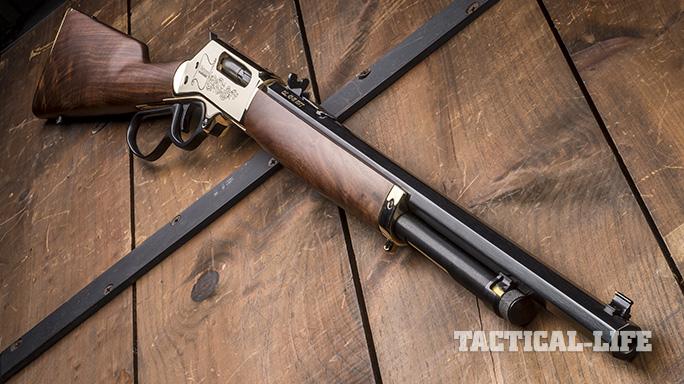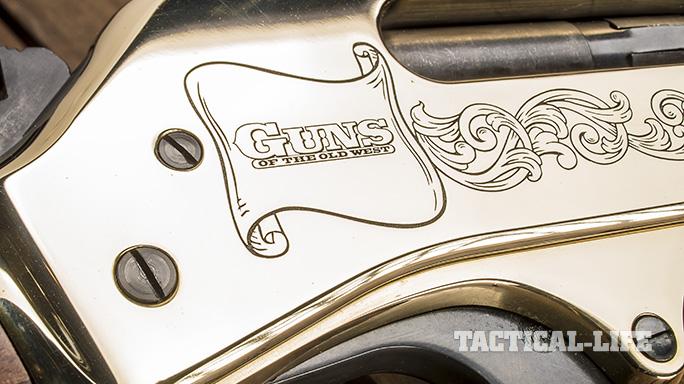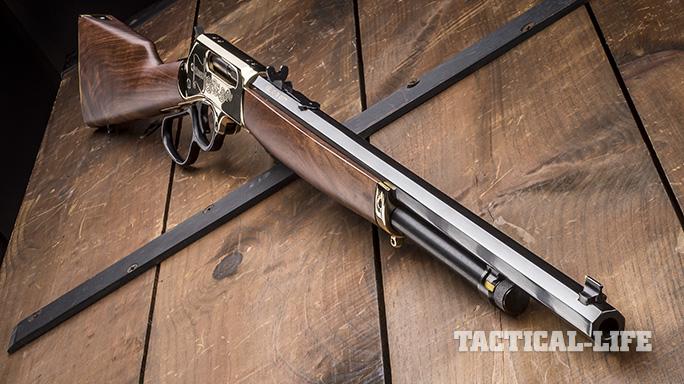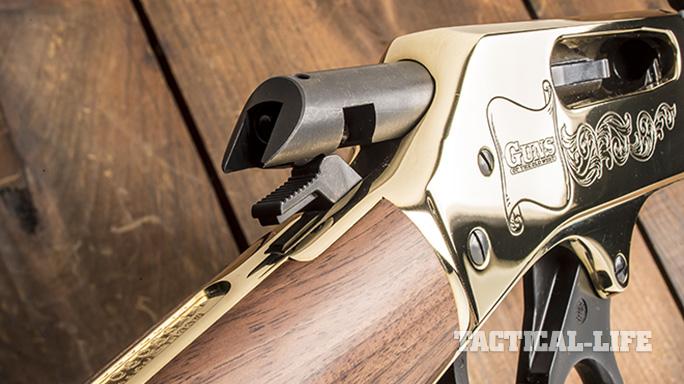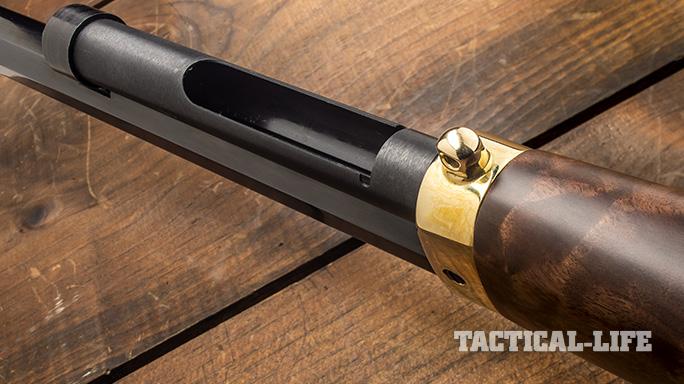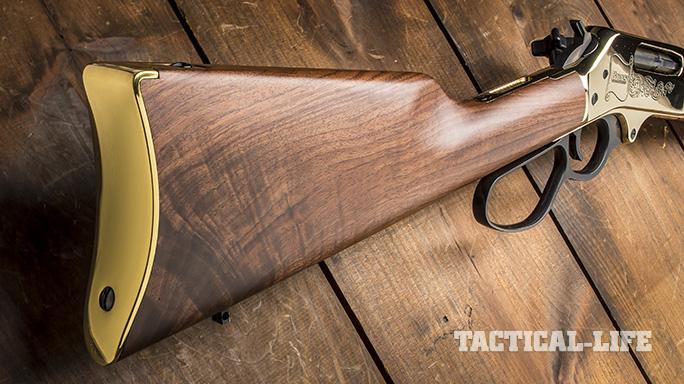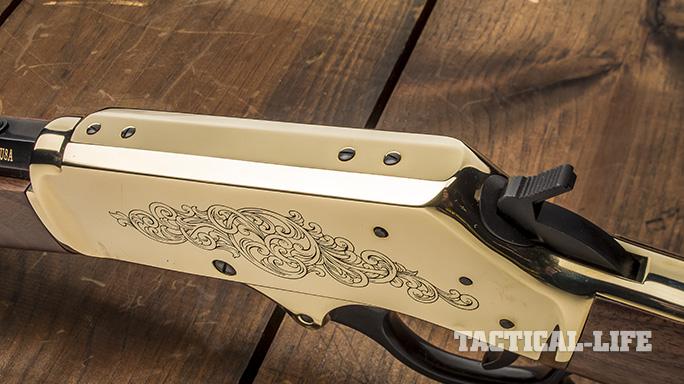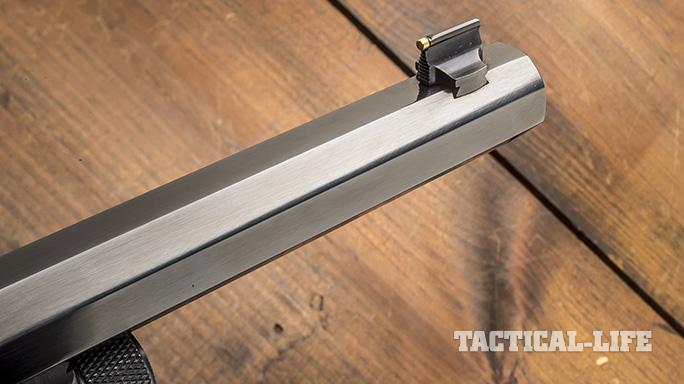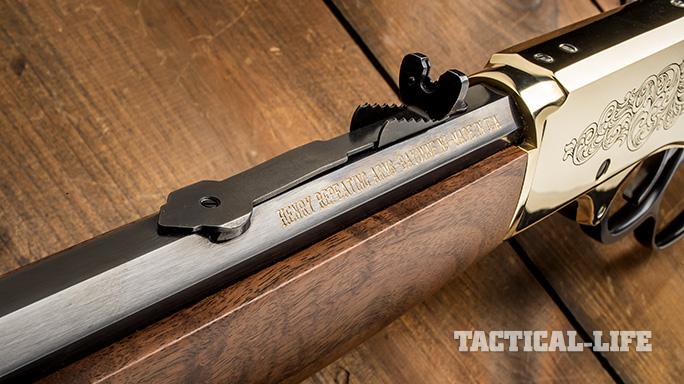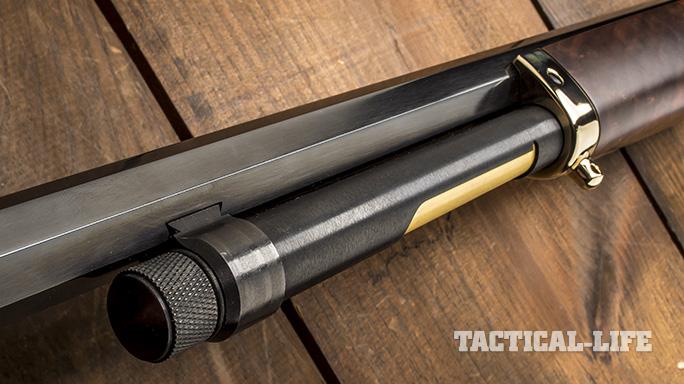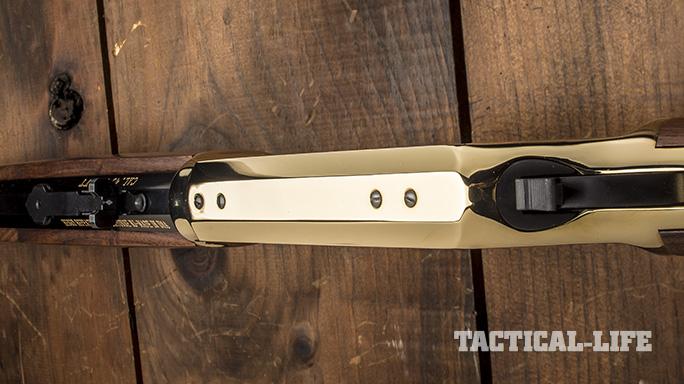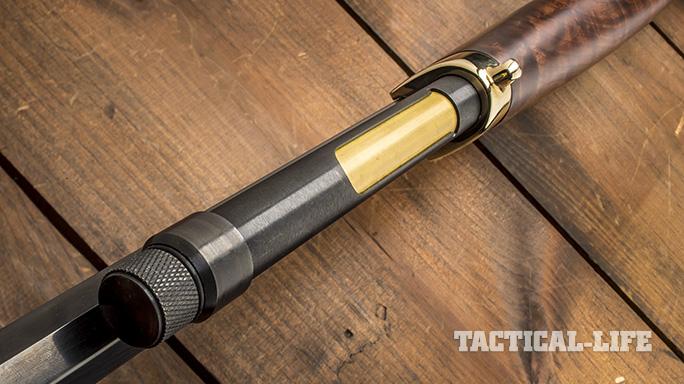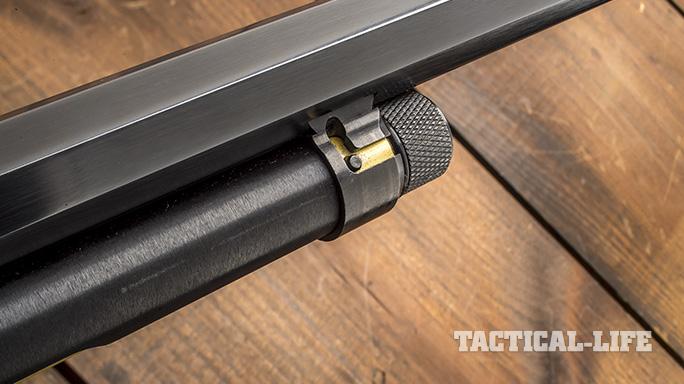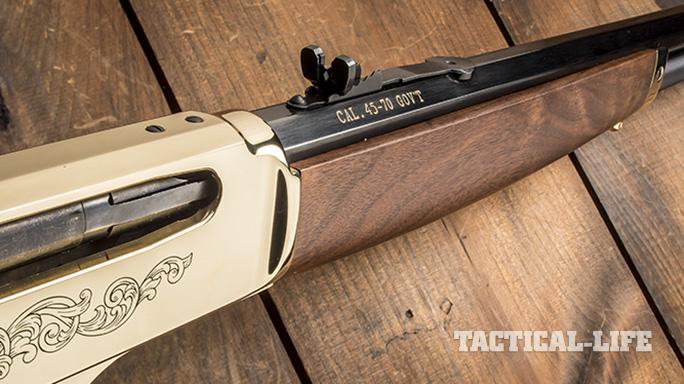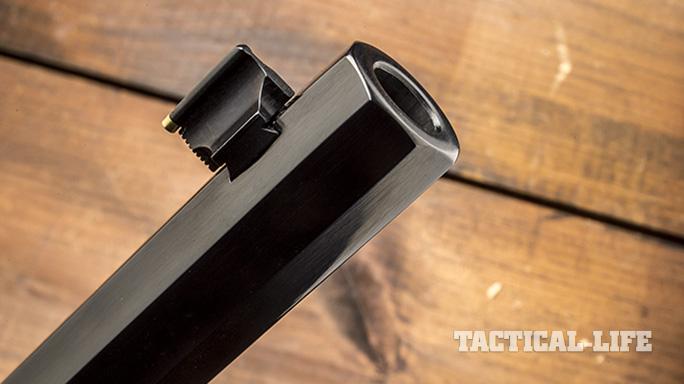The classic .45-70 Government caliber is one of those golden oldies rooted so deep in both lore and utility that it refuses to die, and while there may have been dips and droughts in popularity during its 144-year history, it’s managed to long outlast many more “modern” and flashier entries along the way by simply doing what it does best—lobbing a big ol’ heavy chunk of metal at moderate speeds, with relatively moderate recoil levels, to make a distinct impression on anything it connects with at the far end of the rainbow.
Today, the old buffalo-stomper is more popular than ever, and we who put the long .45 to any number of uses, from mild Trapdoor Springfield loads on up to bone-busting grizzly medicine in both jacketed and lead projectiles, have a wide-open field in bullets and factory ammunition. Ammo makers produce a good range of rounds for off-the-shelf shooters, and the straight-walled case is easy to find, affordable to buy in bulk and simple to handload for the basement ballistician at home.
- RELATED STORY: Leveraging Power – Top 9 Big-Bore Lever-Action Rifles
Launching platform options may not be quite as ubiquitous as those for the more mainstream bottlenecked calibers like the .30-06 and 7mm Magnum, and there’s a distinct shortage of high-capacity, semi-auto .45-70s with 30-round detachable box magazines. But considering the nature and history of the old caliber, most of us are able to force ourselves to be satisfied with one of the traditional single-shots, or one of several lever-actions either based on older designs or more modern adaptations.
Advertisement — Continue Reading Below
In lever guns, the .45-70’s well represented as an import in Italian products that run the gamut from fairly faithful reproductions to upgraded versions that take the Winchester Model 1886 pattern into modern territory with weather-resistant finishes, optic rails and rubber recoil pads, and both Browning and Winchester have offered high-quality Japanese-made 1886 repro-ductions in the caliber for several years.
Here at home, if you’re looking for an American-made .45-70 lever action, your choices are either the current iteration of the Marlin Company in Ilion, N.Y., or Henry Repeating Arms in Bayonne, N.J. Of those two, while Marlin offers more .45-70 options in its long-running steel-framed 1895 line, the Henry 45-70 has by far the most style points with its brass-framed Lever Action.
The Brass Henry

Henry actually makes two .45-70 Lever Action models: the H010, which has a pistol-grip stock, a steel frame and a round barrel, and the H010B, which features a straight wrist, a brass frame, an octagonal barrel and an oversized loop lever. While the steel-framed model is a perfectly fine working gun in itself, it’s the brass-framed version that unquestionably grabs your eye the hardest between the two.
Advertisement — Continue Reading Below
Introduced back in 2015, it didn’t take long for this rifle to put itself squarely on the map for those looking for a big-bore rifle with a shade more flash than most other members of the .45-70 pack. A lightweight deer rifle it ain’t, but if there’s a touch of the magpie in your ancestry and a disposition toward plated sixguns and silver concho’d gun belts, this one should be a natural match for you.
Built around a highly polished hardened brass alloy frame, along with a curved carbine-type buttplate and front forend cap of the same material, the deep bluing on the rifle’s well-polished, 22-inch, octagonal barrel adds another touch of nostalgia, and the oversized lever in Henry’s own distinctively shaped pattern is another standout on the gun’s profile. Once you get past those, you’ll also notice the American walnut furniture, the tall brass bead front sight, the adjustable semi-buckhorn rear sight, the sling swivel studs and the missing loading port below the frame’s ejection port. Like all but one of Henry’s lever guns, this big bore loads just like the rimfires—through a cutout in the magazine tube.
All About That Brass

You might wonder, if you haven’t already, just how well the brass frame holds up. Admittedly, it’s not as strong as a line-by-line counterpart in steel, but for all practical purposes in .45-70, it doesn’t have to be. A straight-walled rifle case is typically a lower-pressured load than a bottlenecked case to begin with, and the larger case diameter of the .45-70 creates less bolt thrust in conjunction with those lower pressures. In simple terms, Henry engineers a safety factor into the brass frame well above the relatively mild 28,000 psi specifications set for the caliber by SAAMI, and that includes loads up into the heavyweights that specialty outfits like Buffalo Bore and Garrett produce. You can safely run the gamut from lead rounds at 1,200 fps on up to jacketed rounds at 2,000 fps, all with a clear conscience to mate your load to your needs, whether it’s plinking Cowboy Action steel at the local weekend match or hunting grizzlies in the low mountains.
Advertisement — Continue Reading Below
A side issue with all that shiny brass territory is that you can easily keep it polished to stay that way for a field-expedient shaving mirror out on the range, or you can let it gracefully age to the patina of a well-used lever gun from the late 1800s. Henry’s rimfire Golden Boy lever actions use a different alloy with a gold-toned coating on their receiver covers that’ll retain their shine just short of forever, but the brass centerfires use solid frames with bare-naked surfaces that can and will dull up nicely with long-term use. You can stay with bright and tin-horn shiny or go with seen-it-all/done-it-all subdued. Your choice.
Shootin’ Time with the Henry 45-70

This brass-framed rifle, with its octagonal barrel, is not a lightweight at 8.1 pounds unloaded. That can work off some calories if you carry it on a long trek, which may be a slight negative for some, but when it comes time to let it roar with modern ammunition, it’s a bonus on the shoulder, especially with a solidly non-cushioned buttplate. Henry wisely did not go with a crescent buttplate here, and between the more gentle curve of the carbine-style pattern and the overall weight of the rifle, it was much less of a slammer off the bench than I was expecting with three different factory loads at 100 yards.
On a cold December day in calm conditions, the rifle produced groups certainly hunt worthy, as it held the best three-shot groups under 3 inches, with one going under 2 inches. The Remington 405-grain JSP rounds were powderpuffs by modern .45-70 standards, the Winchester 300-grain JSPs created tight groups, and the relatively new, high-performance, all-copper Barnes 300-grain VOR-TX TSX load is beginning to set new expectations for a very old caliber. These loads cover a wide spectrum of both uses and prices, and the Henry handled them all more than well enough to ride the river with.
Advertisement — Continue Reading Below
- RELATED STORY: 16 Specialty Bug-Out Rifles Built For Stow-and-Go
The groups could possibly have been even tighter in better lighting; under a canopy at a state-owned rifle range with totally overcast skies that have combined to defeat iron sights on other guns in the past, the sights were not all that easy to see, but the big brass bead out front covers lots of variation in lighting conditions far better than many all-black blades do.
The action was not quite as smooth as a Henry rimfire’s, but it’s a different design and shouldn’t be expected to be, and it should slick up a shade with more use. The glove-sized loop lever is uncommonly handy in 18-degree temperatures. The 5.25-pound trigger was at least a pound heavier than I’d ideally prefer, but it had zero creep and zero overtravel with one of the cleanest let-offs I’ve encountered in a factory trigger in a long time. And for those of us not overly fond of a manual safety device on a lever gun, the in-hammer transfer bar safety provides for worry-free carry through hell or high water with the hammer down behind a live chamber all day long.
Way back when, I politely suggested to Henry owner Anthony Imperato that he reconsider that rimfire trombone loading system when he was first developing the centerfire lever guns and leaning towards it. He politely stuck to his guns (literally), and quite honestly, after working with several over the years, it doesn’t bother me. If I ever reach the point where I decide I do need a quick-reloading .45-70 as a primary battle implement, I’ll just sell the house and pick up a Gatling gun. In the meantime, loading through the magazine tube instead of a frame port isn’t an issue in a big-bore hunting rifle.
Advertisement — Continue Reading Below
Shine On

Of the two .45-70s that Henry produces, this one gets my nod. I’m not usually a shiny-gun guy, but the overall looks of the rifle just pull up Saturdays in front of the TV as a kid from the dim recesses of childhood memories, and growing up here in the West, it’s more of a traditional fit for me than the more modern-looking steel version. It doesn’t hurt that it’s a good shooter and not much of a thumper at the back end.
Should you be in the market for a new big-bullet bear-buster, give this one a hard look. Rumor has it that you could even take moose, elk and Texas jackrabbits with one, too.
For more information on the Henry 45-70, visit henryrifles.com or call 201-858-4400.
Advertisement — Continue Reading Below
